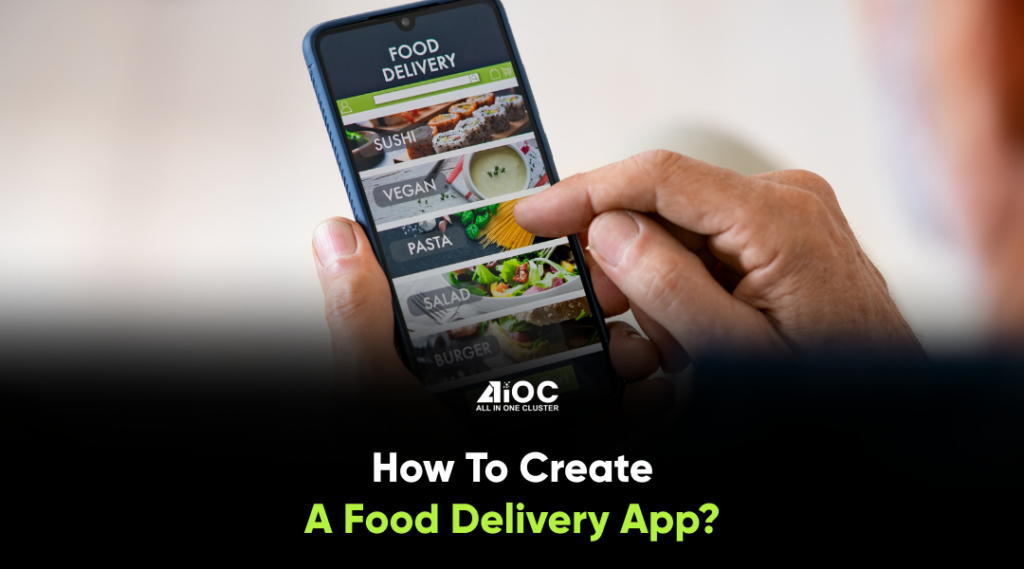The business for on-demand food applications has experienced remarkable growth because of Covid. As a result, entrepreneurs are already working to create a food delivery application to benefit from this expanding market. For them, this guide brings the strategic steps to follow to create a fully functioning food delivery app.
So, get ready to learn something new today
A step-by-step guide to develop an exceptional food delivery app
Owners of businesses may start their own online food delivery services by following the strategic steps covered here:
Know the trends:
First of all, You need to be aware of the new delivery channels and other trends in the food delivery app
Few of the recent trends in food delivery app are:
- Consider adding capabilities for ordering via social media accounts to help your project stand out in the chosen niche.
- Think about including a virtual assistant in the application. Chabot allows ordering through messengers and makes food requests with a single word:
- Consider doing that as wearable technology is now commonly used by food delivery services.
Market analysis
Market research and planning include analyzing competitors, determining your app’s unique selling propositions, and comprehending your target market. Select your app’s features, users, and business plan.
Know your target (KYT like KYC)
You need to understand your target market if you want to create a great food delivery service. It is simple to create an app that perfectly fulfils the demands of target consumers if you have an understanding of who would use the food delivery service.
The target market may be specific, like raw gluten-free vegans, or general, like pizza aficionados.
Utilising demographic parameters, develop a target customer profile by outlining the following details in order to build a clear image of the target audience:
- Social traits such as age, gender, nationality, and income
- What possible client issue may your project address?
- What emotions will users of your application experience?
- Why should users choose this platform over rivals?
You will have a clear understanding of the target market once you have clarified each of these issues.
Validate the idea:
A well-known online food delivery service that lets customers order from their favorite restaurants.
Scripts of food delivery app should mimic the core features of the original service, including user registration, restaurant listings, food ordering, delivery tracking, and payment integration.
Draughts of the design and wireframes
To improve User Experience (UX) and User Interface, you should make wireframes and design prototypes for your food delivery app by emphasizing logical navigation, usefulness, and simplicity.
Decide features of your food delivery app
It is indeed an essential step in the development of food delivery apps. Pick every feature carefully that works great for your targets. Some of the important features are:
- Registration
- Listing of restaurants
- Menu items:
- Placing an order:
- Live Monitoring
- Different payment methods
- Reviews and ratings
- Push notifications
- Comprehensive dashboard
- driving-related delivery app
Scalability and Tech stack
Develop food delivery software or an ap that can handle a growing user base and growing order volume. Literally, it has to be scalable.
And choose best tech stack for the reliable food delivery app development
- You can use HTML, CSS, JavaScript, React, Angular, or Vue.js as front-end technologies.
- For the back end, use PHP, Ruby on Rails, or Node.js.
- DBMS: PostgreSQL, MongoDB, or MySQL.
- Using Amazon S3 or Google Cloud Storage.
- integrating the payment processors Stripe, PayPal, or Braintree.
Development strategies
- Hire a Development Team: If you have the funds, you could pay a team of programmers to construct an food delievery from scratch.
- Ready-Made Scripts: Purchasing a readymade clone script that has already been built from a trustworthy software provider is an additional option. This option is typically Quicker and more economical.
Before you buy, consider the following: Research and compare many clone scripts to choose the one that best suits your needs. Check the features, customization options, scalability, and customer reviews of the product. Verify that the script has the essential guidance and technical assistance.
Legal and Ethical Issues:
Pay attention to local laws and regulations governing online marketplaces and food delivery. Respect intellectual property rights and refrain from breaking trademark or copyright laws.
Revenue streams of food delivery app
To create cutting-edge food delivery services, you may mix several income sources. They will aid you in selecting the best revenue plan once you have chosen the best mobile app developer to work on your app development.
- price for delivery: Depending on the area, the platform owner may charge users a price for delivery.
- Vendor fee: If the administrator approves it, vendors may charge a fee for each sale.
- Service price: The negotiated fee that platform owners will pay to suppliers for their services.
- In-app Ads: Ads that don’t interfere with placing a food order can be included in the app to generate revenue.
During busy times, surge pricing is one way to generate revenue. Restaurants will pay more for the software since it responds to customer demands more quickly. Furthermore, it is possible to raise commission costs levied against customers in exchange for prompt order fulfilment.
Final Reflections
There are a lot of applications that provide food on demand. You didn’t come up with the concept on your own. There are two ways you may handle the fierce rivalry. You can give up on the concept entirely if you allow the rivalry deter you from going back.
Alternately, you can just move forward and take a chance. If you have enough faith in your concept, you may develop a food-ordering app that will quickly become a favorite among users by using the appropriate approach and plan. Or, share your thoughts on a food delivery app. We are eager to hear your suggestions so that we can proceed to provide you with the greatest growth advice, skill, and support.
